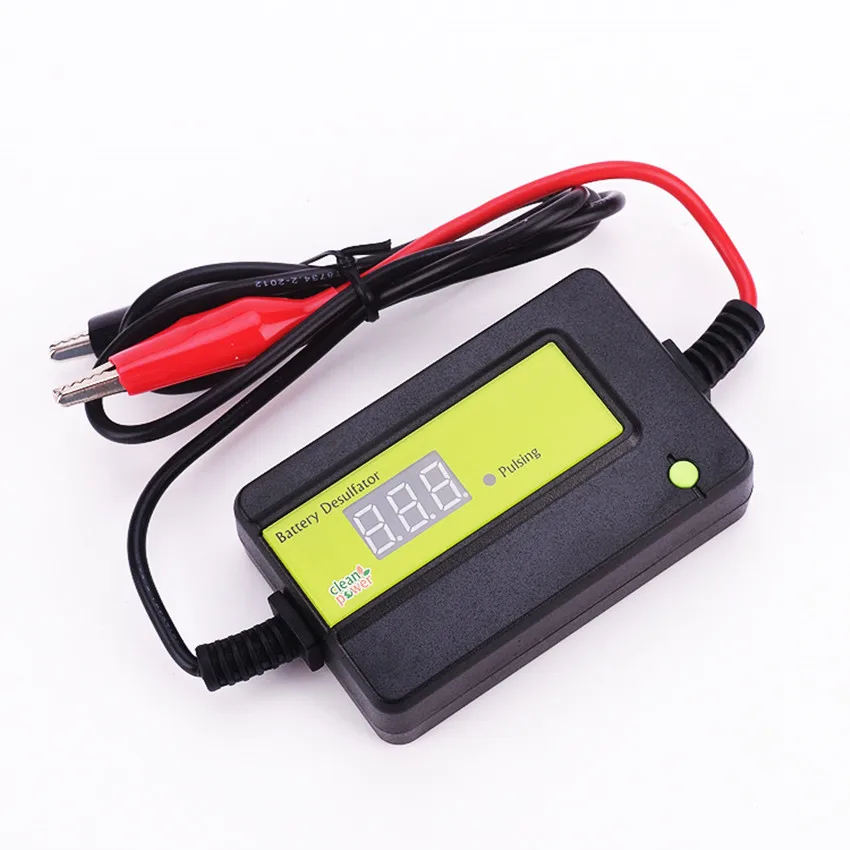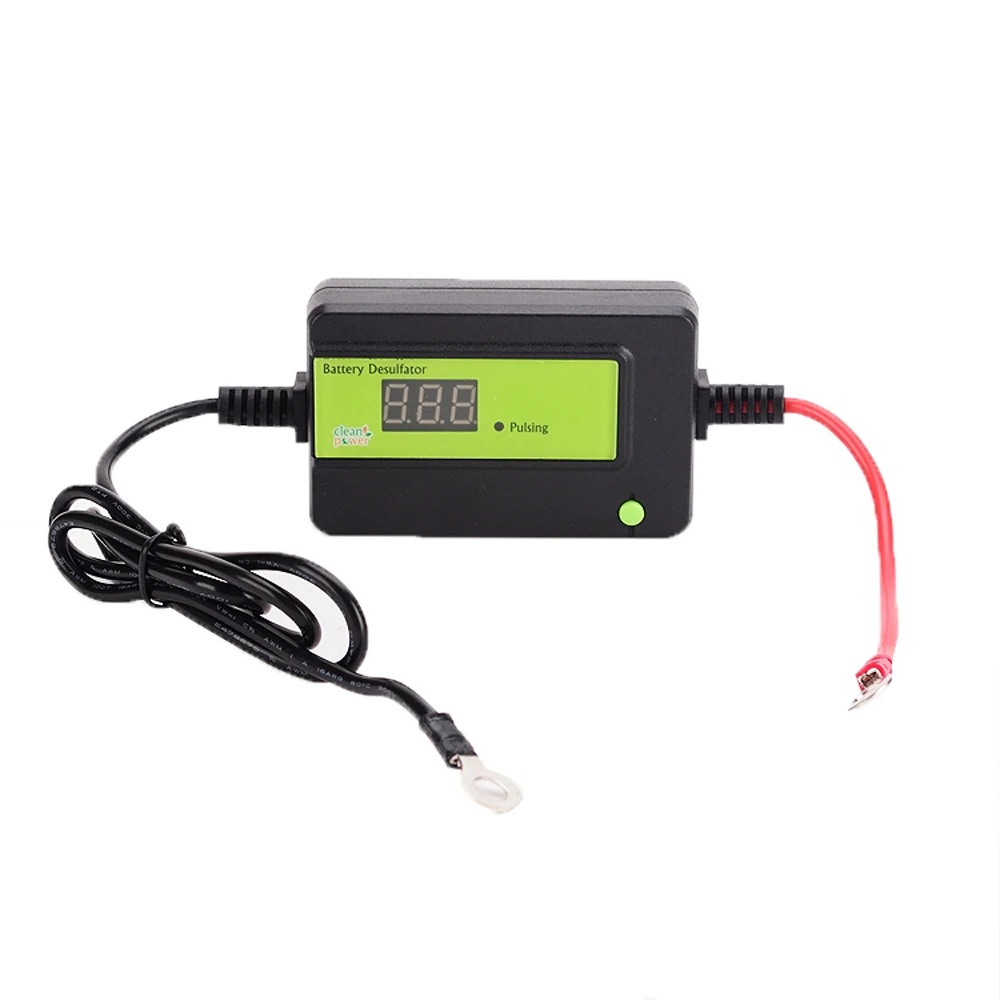

This desulfator is the one the professionals use, for example fleet owners who have dozens, or hundreds of vehicles. Is F16 Pulse King up to the task… Does it work? We see battery after battery after battery fail due to sulfation, and we know that most of these batteries are capable of lasting much longer.Īnd yet we know that sulfation is reversible if you take action quickly enough. They were under 1 volt and batteries don't like that.Sulfation is one of our major bugbears for the Car Battery Geek team.

I did major damage to the Trojan's a few years ago when I forgot that my inverter turns on automatically when I turn the battery switch on and I didn't get back to it for a week.
#BATTERY PULSE DESULFATOR PLUS#
My dad told me years ago that it would work but I've never tried it.īTW, I paid a little under a hundred each for the Interstate batteries a month ago and the Trojan's were 150 plus tax when I bought them about 5 years ago.


I'm thinking of just hooking a pair of them up together and discharging them to zero volts with a light bulb and then reverse charging them. It sure seems like it would work the same way. What I've been thinking about doing is reverse charging them with a non automatic charger and seeing if it will do the same thing as I use to derust things with electrolysis. I have a setup in our 5th wheel with 6 golf cart batteries and solar with inverter and I just bought a new set of Interstate batteries from Costco to replace the Trojan T-105's that aren't holding a charge very well and have specific gravity in the yellow/red zone. you can dump a lot of amps into the battery "backwards" and then suddenly the battery gets really hot later. except when i tried to reverse charge open circuit 5 amp hour sealed agm cells without adding water. I have not had any problems with the batteries failing suddenly or in a catastrophic manner when reverse charging. this is typical of my many other experiments with permanently reversing the polarity of lead acid batteries. I tried charging it and discharging it with no improvment, then reverse charged it.Īfter 400 amp hours of current i was able to discharge it, and was able to pull 60 amp hours out of it.Īfter a dozen charge and discharge cycles its capacity quickly dropped to 30 amp hours, or about 1/3rd of nameplate capacity. I cut the top of the battery off and added a bunch of water. it was completely open circuit, didn't draw current at all. essentially designed to never be discharged but sit on a shelf in a government lab, or nuclear power plant. it lasted 2 more years.īest result i had from reverse charging an AGM battery was a GNB 90 amp hour agm battery intended for permanent float charging. we added some water, reverse charged it, measured its reverse capacity at 27 amp hours (1/3rd new capacity) and put it in my mom's jeep. after a few days of reverse charging i was able to discharge it and reach 20 amp hours capacity.Ī battery from my brother's boat reached somewhat useless capacity over many years. My dad had a standard napa brand battery in his work van, lasted 6 years before its capacity reached merely 1 amp hour as tested. where the extra acid came from i have no idea, as i still have 3 quarts of 1.3SG acid from that battery. After 2 months of charging the specific gravity increased from 1, to 1.2. original electrolyte dumped out was 1.3 specific gravity. battery was placed back in my truck and i got another year of use out of it before it failed again, this time permanently. Battery left on 1 amp capacity 13.8v float charger for 2 months. Electrolyte was dumped out and replaced with water. it got to the point where couldn't keep the headlights on for 5 minutes or truck wouldn't start. I have had limited experience with two methods.įirst one was a standard car battery. I can definitely see that even if it has to live on the charger when not in use, if it will get one truck unloaded without quitting, it's likely to be usable to many folks with intermittent need for a forklift. The overall results were more hassle than the cost of the battery. I don't know about that, as I've not tried one. Supposedly the pulse type will convert sulfate that is not "reachable" so long as it has not actually fallen off. And the couple that seemed to work OK had a fraction of the capacity they should have, possibly because the sulfate dropped off, possibly because much of the sulfate was not "reachable" by the current. Generally, even if they did come back to nominal volts, when charged "for real", they shorted, or otherwise failed, dropping back to a lower voltage. Never tried the pulse types, but I've never yet had a constant current type charger bring back a battery to any reasonable performance.


 0 kommentar(er)
0 kommentar(er)
